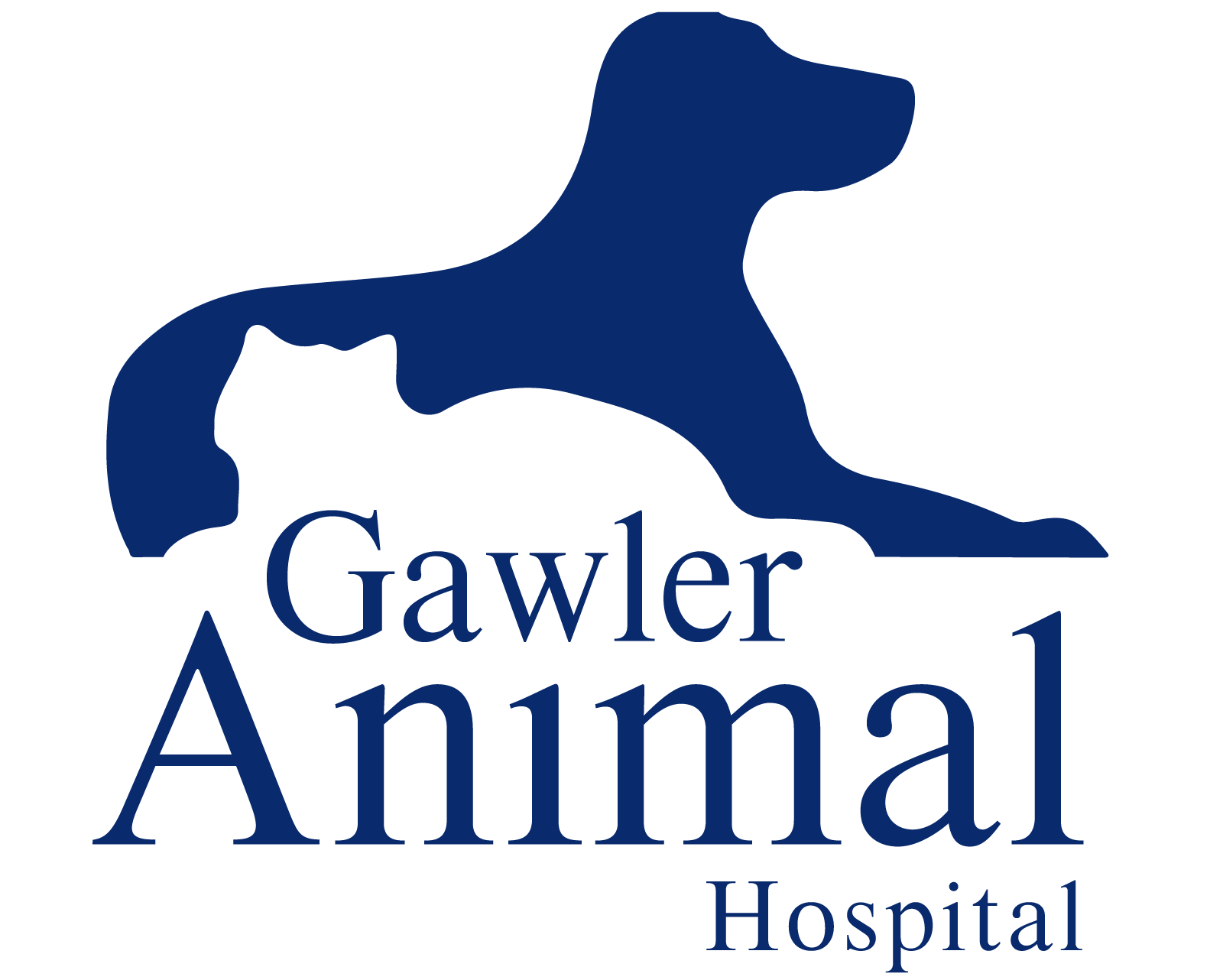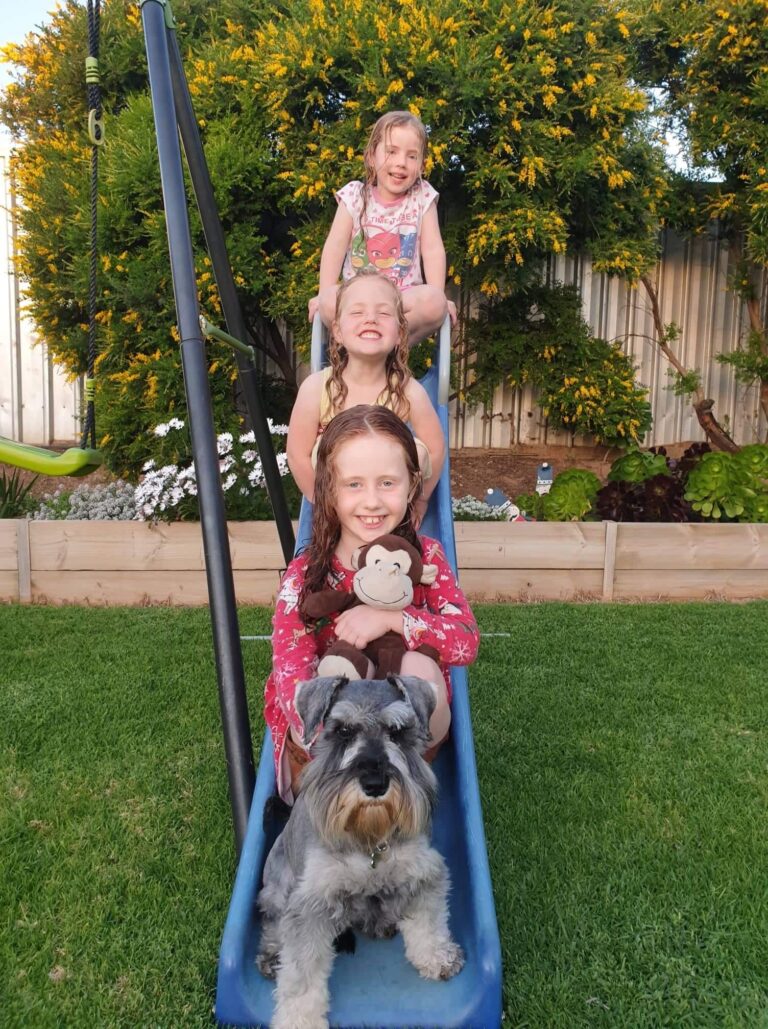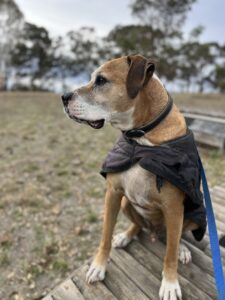The human-animal bond is something that all pet owners can identify with. Our family pets form part of our daily routine and influence our physical, emotional, social and mental wellbeing. The challenges of the Covid pandemic have highlighted the strength of the human-animal bond even more so.
I recently had the pleasure of visiting a local Preschool to have a chat to the kids about being a vet and staying safe around dogs. While preparing for the visit, I came across some interesting information and great resources that I would love to share.
It is not surprising to read that 61% of Australian households have pets. Households with children make up the majority of those living with pets, with dogs being the most popular family pet. Why focus on kids staying safe around dogs you may ask? Well, unfortunately research has shown that our canine friends, while the most popular family pet, are also the pet responsible for the most injuries that require hospitalisation. Children between the age of 0-4 years are the most vulnerable to an injury from a dog. 80% of these injuries have been shown to be caused by a dog that is known to the child or part of the family. Approximately half of dog bite injuries were to the face and neck (due to the height of the child at this age). As the adults and parents, we carry a huge responsibility to keep kids and dogs safe around each other.
We welcomed an adorable miniature schnauzer, Joey to our family last year and watching the bond between my three girls and Joey develop and grow has been heart-warming . The love the girls have for their pup is incredible BUT it did not always come easy and clear boundaries had to be established to keep our precious pup and our girls safe. This is a huge area to cover, so I am only going to touch on a few steps here and provide some links to other resources for those of you whom would like to read further.
Steps to safety in your home:
• Active supervision: This means being available to intervene immediately. For children less than 4 years old you need to be in arms reach of the infant or the dog at all times or have a solid barrier to separate them. Toddlers on the move are particularly vulnerable, baby gates can be invaluable in helping to create a safe barrier between bub and your pup while not isolating them from the family. For older kids, if you have any doubts, separate the child and dog if you are not able to actively supervise, especially around food, times of high excitement or if the dog is sleeping or unwell.
• Make a ‘safe space’: It is important to have an area where your dog can go and be undisturbed (a crate for example). Ideally this is where your dog will sleep and eat. Educate your child that when their dog is in this zone, they must leave him/her alone. It is important that you train and encourage your dog to use their safe zone and that they do not perceive it as a punishment. In the ideal world your dog will choose to retreat to the safe zone when they need a break
• Training: This applies to the kids and your dog! Train your dog using positive reinforcement techniques to sit, stay, come, go on their bed etc. Teach your children how to pat their dog gently (not on the head!), how to be kind to their dog, how to play gently with their dog, not to disturb the dog when he/she is eating or sleeping
• Education: there are a plethora of resources available to help teach kids how to interact safely with dogs. Children can accidentally hurt your dog by pulling their ears, squeezing them too tightly with a loving cuddle etc. Dogs cannot say “Stop it, I don’t like it” like your preschooler can so may resort to a growl, snap or bite instead. It is your responsibility as the supervising adult to make sure that these interactions do not happen and that your dog is not put in such a situation. ‘Victor and Victoria’s Pet Town’ is a great interactive resource for children preschool age upwards (and it is free!). Find it at http://www.livingsafelywithpets.com.au/
• Family and friends: Make sure you discuss dog and child safety with anyone involved in caring for your child or dog.
• Be a positive role model: Remember, your children will copy and treat your dog how you do. If you play roughly with your dog and encourage it to jump up on you, he/she will apply the same rules to your child.
• Be prepared: preparing your dog for the introduction of a new baby is equally as important as preparing your children for a new puppy. The ‘We Are Family’ booklet available at http://www.wearefamily.vic.gov.au/ is a great online resource. ‘Tell Your Dog You’re Pregnant’ and ‘Tell Your Cat You’re Pregnant’ by Dr. Lewis Kirkham are two books that I can also recommend.
It is a great privilege to be a pet owner and a parent. We can all play a valuable role in fostering a healthy and loving human-animal bond between our children and their pets. If you ever have any concerns about how your children and pets are interacting at home, do not hesitate to reach out and chat to one of our friendly team.
Written by our Mini Schnauzer lover and girl mum, Dr Jenny Nesci.






